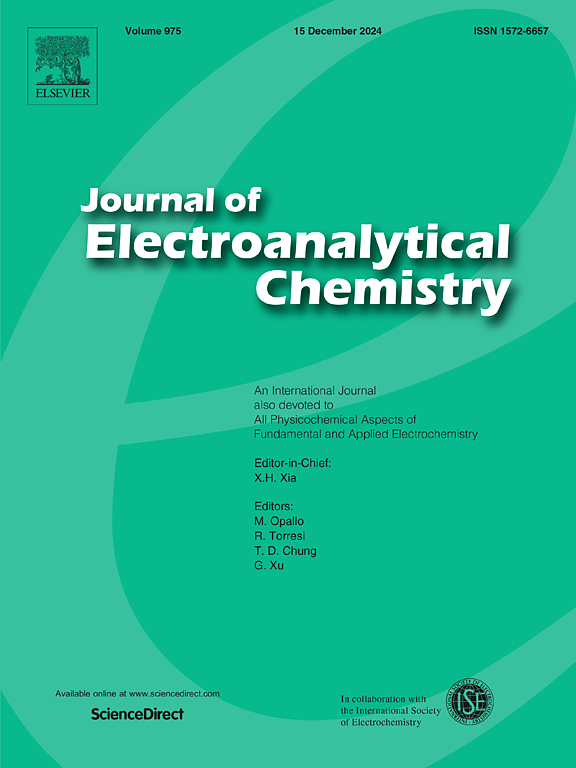Revealing the mechanism of grain refinement's effect on the discharge performance of AZ31 magnesium anode under different pulse currents
IF 4.1
3区 化学
Q1 CHEMISTRY, ANALYTICAL
引用次数: 0
Abstract
Magnesium-air batteries possess high theoretical energy density, but their anode discharge performance is limited by microstructure. This study investigates the regulatory mechanism of microstructure on discharge performance by controlling effective pulse currents (120–240 A). The results show that the AZ31 magnesium alloy treated by 120 A pulse current exhibits excellent discharge performance at various discharge current densities. The discharge voltages was 1.077 V at current densities of 10 mA·cm−2, respectively, with corresponding anode efficiencies of 58.9 %. This is primarily due to the formation of a uniformly distributed fine-grained structure (average grain size of 5.82 μm) compared to other pulse currents. The fine-grained structure provides more grain boundary dissolution channels, and the uniform grain distribution significantly mitigates the “chunk effect”. Although the alloy treated with 120 A pulse current has a relatively high β-Mg17Al12 phase content and a preferred (0001) grain orientation, which are disadvantageous, its uniform fine-grained structure effectively counteracts these adverse effects. This study confirms that grain size is the primary factor in regulating the discharge performance of magnesium anodes, providing a theoretical basis and technical pathway for designing high-performance magnesium-air battery anodes.
揭示了不同脉冲电流下晶粒细化对AZ31镁阳极放电性能影响的机理
镁空气电池具有较高的理论能量密度,但其阳极放电性能受到微观结构的限制。本研究通过控制有效脉冲电流(120-240 A)来研究微结构对放电性能的调节机制。结果表明:120a脉冲电流处理后的AZ31镁合金在不同的放电电流密度下均表现出优异的放电性能;放电电压为1.077 V,电流密度为10 mA·cm−2,阳极效率为58.9%。这主要是由于与其他脉冲电流相比,形成了均匀分布的细晶结构(平均晶粒尺寸为5.82 μm)。细晶结构提供了更多的晶界溶蚀通道,均匀的晶粒分布显著减轻了“块体效应”。虽然经120 A脉冲电流处理的合金具有较高的β-Mg17Al12相含量和优选的(0001)晶粒取向,但其均匀的细晶组织有效地抵消了这些不利影响。本研究证实了晶粒尺寸是调控镁阳极放电性能的首要因素,为设计高性能镁空气电池阳极提供了理论依据和技术途径。
本文章由计算机程序翻译,如有差异,请以英文原文为准。
求助全文
约1分钟内获得全文
求助全文
来源期刊
CiteScore
7.80
自引率
6.70%
发文量
912
审稿时长
2.4 months
期刊介绍:
The Journal of Electroanalytical Chemistry is the foremost international journal devoted to the interdisciplinary subject of electrochemistry in all its aspects, theoretical as well as applied.
Electrochemistry is a wide ranging area that is in a state of continuous evolution. Rather than compiling a long list of topics covered by the Journal, the editors would like to draw particular attention to the key issues of novelty, topicality and quality. Papers should present new and interesting electrochemical science in a way that is accessible to the reader. The presentation and discussion should be at a level that is consistent with the international status of the Journal. Reports describing the application of well-established techniques to problems that are essentially technical will not be accepted. Similarly, papers that report observations but fail to provide adequate interpretation will be rejected by the Editors. Papers dealing with technical electrochemistry should be submitted to other specialist journals unless the authors can show that their work provides substantially new insights into electrochemical processes.

 求助内容:
求助内容: 应助结果提醒方式:
应助结果提醒方式:


